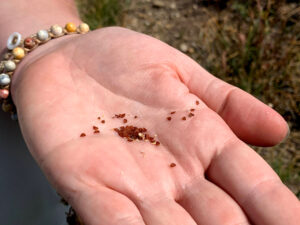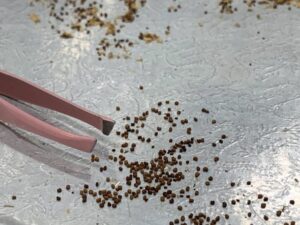OBJECTIVE 2. Conserve alpine plants and their habitats >
TARGET 8:
Conserve 60% of all identified alpine plant species in North America ex-situ by 2030.
Sixty percent of identified North American alpine plant species will be maintained in ex-situ collections of botanic gardens or seed banks as plants, living tissues or seeds, with appropriate genetic representation to support restoration and will be managed according to science-based protocols.
Ex-situ conservation measures such as seed banking, cryopreservation and tissue culture are the most important methods to preserve alpine plant genetic material. Alpine species are particularly vulnerable to climate change and banking seed of these species will allow for studies to understand their ecological tolerance and potential for adaptation, thus informing conservation and restoration programs. This target will require cooperation with public land management agencies as well as private landowners for collection permitting.
It is also important to develop carefully monitored living collections for a better understanding of propagation protocols and ecological requirements. Collections grown as living specimens in botanic gardens can also be valuable for educational purposes and raising public awareness.
Data on all these collections will be shared with the community through tools such as BGCI’s Plant Search database.
Progress
Currently underway!
Approach
Ex-situ means “off site”, so this target aims to conserve alpine plant species through seed-banking, cryopreservation, tissue culture, and in the living collections of botanic gardens. Here at Betty Ford Alpine Gardens, we focus our summer field season on collecting seeds of alpine plants. Most of the seeds are sent to the National Lab for Genetic Resources Preservation in Fort Collins for long-term banking, while a small portion is grown in the Gardens to be preserved as a living collection. Because there is actually very little research about whether alpine seeds retain their viability after storage, conserving species in living collections is especially important. One of the Alpine Strategy partners is Alexandra Seglias, Seed Conservation Research Associate at Denver Botanic Gardens, who is experimenting with artificial aging of alpine seeds to fill in our understanding of how these species will survive in a seed bank.



